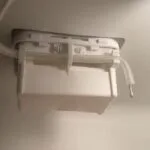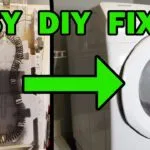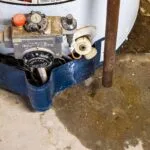If your heat pump outside unit is not running, it could be due to a tripped circuit breaker, blocked fan airflow, or a damaged condensing unit. Other possible reasons include incorrect thermostat settings or a malfunctioning compressor.
To troubleshoot the issue, check the circuit breaker, remove any debris blocking the fan, and ensure that the thermostat is set correctly. If the problem persists, it may be necessary to contact a professional HVAC technician for further assistance. Regular maintenance of your heat pump can help prevent issues like this from occurring in the future.
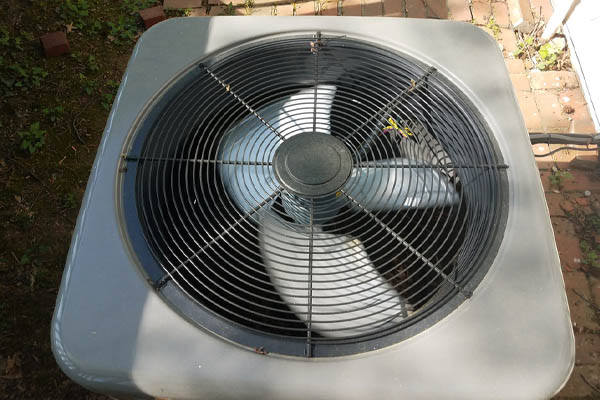
Credit: www.pointbayfuel.com
Identifying The Issue
When your heat pump’s outside unit fails to kick on, it can be a source of frustration and discomfort. Identifying the underlying issue is crucial to getting your system back up and running efficiently. By understanding the initial symptoms of failure and common causes for non-operation, you can take the necessary steps to troubleshoot and resolve the problem.
Initial Symptoms Of Failure
Recognizing the initial symptoms of a failing heat pump outside unit is essential for prompt troubleshooting. Some common signs include:
- Failure of the outside unit to turn on
- Unusual noises or vibrations during operation
- Inconsistent or inadequate cooling performance
- Unresponsive thermostat commands
Common Causes For Non-operation
Several factors can contribute to the non-operation of the heat pump’s outside unit. These common causes include:
- Tripped circuit breaker or blown fuse
- Obstructed airflow due to debris or vegetation
- Damaged condensing unit components
- Incorrect thermostat settings
- Mechanical issues with the compressor or fan
If your heat pump’s outside unit is not running, performing a systematic evaluation of these potential causes can help in pinpointing the exact issue and taking appropriate remedial actions.
Safety First
Having your heat pump’s outside unit not running can be concerning for both safety and comfort. Possible reasons could include a tripped circuit breaker, blocked fan airflow, damaged condensing unit, incorrect thermostat settings, or a malfunctioning compressor. It’s important to troubleshoot and address these issues promptly to ensure the safety and efficiency of your HVAC system.
Power Supply And Electrical Hazards
When dealing with a heat pump outside unit not running, safety should always be the top priority. It’s important to remember that the outside unit is powered by electricity, and there are potential hazards associated with working on electrical components. Here are some crucial safety precautions to keep in mind:
- Before inspecting or troubleshooting the outside unit, ensure that the power supply to the unit is completely turned off. This can typically be done by switching off the circuit breaker that controls the heat pump.
- Always use insulated tools when working on the electrical components to prevent the risk of electric shock.
- Never attempt to bypass any safety features or attempt repairs if you are not experienced with electrical systems.
- If you are uncertain or uncomfortable with any aspect of troubleshooting the electrical system, it is best to seek professional assistance.
When To Call A Professional
While some troubleshooting steps for a heat pump outside unit not running can be performed by homeowners, there are certain situations where it’s best to call a professional HVAC technician. These include:
- Any issues related to the electrical components of the heat pump, such as the capacitor, contactor, or wiring, should be addressed by a qualified professional to avoid the risk of electrical shock or damage to the system.
- If the compressor is suspected to be malfunctioning, it’s crucial to seek the expertise of a professional technician as dealing with compressor issues requires specialized knowledge and tools.
- When troubleshooting steps have been exhausted and the root cause of the problem is still unclear, it’s advisable to contact an HVAC professional to perform a comprehensive diagnostic assessment.
Power Checks
When your heat pump outside unit is not running, it’s essential to perform power checks to identify and address any potential issues. By troubleshooting the power supply, you can determine if the problem lies with the circuit breaker or the outdoor unit’s power switch. Here are some steps to help you diagnose and resolve the power-related problems:
Circuit Breaker Troubleshooting
The first step is to check the circuit breaker that controls the power supply to your heat pump. Follow these steps:
- Locate your main electrical panel or circuit breaker box.
- Check if any breakers are in the “off” position or are not fully engaged.
- If you find a tripped breaker, switch it off completely and then switch it back on.
- Observe if the heat pump outside unit starts running. If not, proceed to the next step.
Outdoor Unit Power Switch
If the circuit breaker is not the cause of the issue, you should check the outdoor unit’s power switch. Here’s what you need to do:
- Locate the power switch near the heat pump outdoor unit. It is usually found on the side or near the unit.
- Ensure that the power switch is in the “on” position.
- If the switch was already on, turn it off and wait for a couple of minutes before turning it back on.
- Observe if the heat pump outside unit starts running. If not, further troubleshooting may be required.
By conducting these power checks, you can rule out any issues related to the circuit breaker or the outdoor unit’s power switch. If the heat pump outside unit still does not run, it may be necessary to seek professional assistance to diagnose and fix the problem.
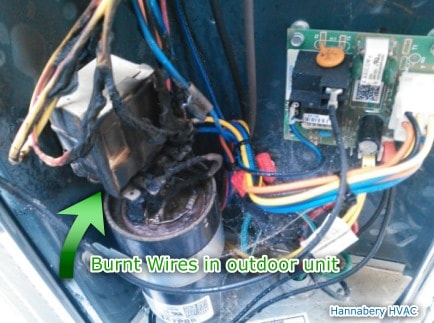
Credit: www.hannabery.com
Resetting The Heat Pump
If your heat pump outside unit is not running, it could be due to a tripped circuit breaker, blocked fan airflow, or a damaged condensing unit. Additionally, the thermostat may not be set correctly or the compressor could be malfunctioning.
To reset the heat pump, turn off the power switch, wait for a few minutes, and then turn it back on.
Steps To Reset Your Unit
If your heat pump’s outside unit is not running, resetting the unit might help resolve the issue. Here are the steps to reset your heat pump:
- Locate the power switch for your heat pump’s outside unit.
- Switch the power off by flipping the switch to the “off” position.
- Wait for two to three minutes.
- Switch the power back on by flipping the switch to the “on” position.
Resetting the heat pump can sometimes fix minor issues and restore the unit’s functionality. However, if resetting the unit doesn’t work, there might be underlying problems that require further troubleshooting.
When Resetting Doesn’t Work
If resetting your heat pump doesn’t resolve the issue of the outside unit not running, there could be other potential problems. Here are a few possibilities to consider:
- Check if the circuit breaker for the heat pump has tripped. If so, reset the breaker by switching it off and then back on.
- Inspect the fan’s airflow and ensure there are no obstructions blocking it.
- Examine the condensing unit for any visible damage or signs of malfunction.
- Verify that the thermostat is set correctly and functioning properly.
- Consider the possibility of a malfunctioning compressor, capacitor, or fan.
If you are unsure about troubleshooting these issues yourself, it’s recommended to seek professional assistance from an HVAC technician. They have the expertise to diagnose and fix complex problems with your heat pump’s outside unit.
Remember, resetting the unit is a simple first step that may solve the problem, but if it doesn’t, it’s essential to address the underlying issues to ensure your heat pump operates efficiently and effectively.
Airflow Blockages
If your heat pump’s outside unit is not running, it could be due to airflow blockages caused by a tripped circuit breaker, obstructions in the fan’s airflow, or damage to the condensing unit. Other potential issues may stem from incorrect thermostat settings or a malfunctioning compressor.
Regular maintenance and troubleshooting can help identify and resolve these issues effectively.
Clearing Debris And Obstructions
If your heat pump outside unit is not running, one possible cause could be airflow blockages. Debris and obstructions can accumulate around the unit, preventing proper airflow and causing the unit to shut down. To remedy this issue, you should first turn off the power to the unit. Then, clear away any debris and obstructions that may be blocking the airflow. This can include leaves, twigs, dirt, and other debris that may have accumulated around the unit.
Fan Blade Inspection
Another potential cause of airflow blockages is a damaged or malfunctioning fan blade. Over time, the fan blade can become bent or damaged, which can prevent it from spinning properly and reducing airflow. To check the fan blade, turn off the power to the unit and inspect the blade for any signs of damage. If you notice any damage, you should replace the blade as soon as possible to ensure proper airflow and prevent further damage to the unit.
If you have tried these steps and your heat pump outside unit is still not running, it may be time to call a professional HVAC technician to diagnose and repair the issue. With their expertise and experience, they can quickly identify the root cause of the problem and provide a solution that ensures your heat pump is running efficiently and effectively.
Component Inspections
If your heat pump outside unit is not running, there could be several reasons for it. It could be due to a tripped circuit breaker, blocked fan airflow, damaged condensing unit, incorrect thermostat settings, or a malfunctioning compressor. Check for these issues and troubleshoot accordingly to get your unit running again.
Component Inspections:
When your heat pump outside unit is not running, there could be several reasons for it. One of the most common causes is a faulty component, which can be easily identified through component inspections. Here are some of the important component inspections that you can perform to troubleshoot your heat pump outside unit:
Checking the Compressor:
The compressor is one of the most important components of your heat pump outside unit. If it is not working properly, it can cause your unit to stop running. To check the compressor, you need to turn off the power to the unit and then remove the access panel to the compressor. Check the wiring and connections to make sure they are secure. If everything looks good, use a multimeter to check for continuity across the compressor terminals. If there is no continuity, then the compressor is faulty and needs to be replaced.
Capacitor and Contactor Issues:
Another common cause of heat pump outside unit not running is faulty capacitors and contactors. Capacitors store energy and release it to start the motors, while contactors connect the power supply to the unit. To check these components, first, turn off the power to the unit. Then, inspect the capacitor for any visible signs of damage or bulging. If you suspect that the capacitor is faulty, use a multimeter to test it. For contactor issues, check for any melted or corroded contacts and replace them if necessary.
Ensuring each H3 heading adheres to HTML syntax:
Checking The Compressor
The compressor is one of the most important components of your heat pump outside unit. If it is not working properly, it can cause your unit to stop running. To check the compressor, you need to turn off the power to the unit and then remove the access panel to the compressor. Check the wiring and connections to make sure they are secure. If everything looks good, use a multimeter to check for continuity across the compressor terminals. If there is no continuity, then the compressor is faulty and needs to be replaced.
Capacitor And Contactor Issues
Another common cause of heat pump outside unit not running is faulty capacitors and contactors. Capacitors store energy and release it to start the motors, while contactors connect the power supply to the unit. To check these components, first, turn off the power to the unit. Then, inspect the capacitor for any visible signs of damage or bulging. If you suspect that the capacitor is faulty, use a multimeter to test it. For contactor issues, check for any melted or corroded contacts and replace them if necessary.
Thermostat Troubles
If your heat pump outside unit is not running, there could be several reasons behind it. The circuit breaker might have tripped, the fan’s airflow might be blocked, or the condensing unit could be damaged. Other potential issues could be a malfunctioning compressor or an incorrectly set thermostat.
One of the possible reasons why your heat pump outside unit is not running could be due to thermostat troubles. It is important to check and verify the correct settings on your thermostat to ensure it is functioning properly.
Correct Settings Verification
In order to troubleshoot thermostat problems, it is essential to verify the correct settings. Follow these steps to ensure the settings are accurate:
- Check the temperature setting on your thermostat and ensure it is set to a temperature that should trigger the heat pump to turn on.
- Make sure the thermostat is set to the correct mode, such as “Heat” or “Auto,” depending on your desired heating settings.
- Verify that the fan setting is set to “Auto” rather than “On.” This ensures that the fan will only run when the heat pump is actively heating.
Thermostat Wiring Problems
Another potential cause for the heat pump outside unit not running is thermostat wiring problems. Faulty or loose wiring connections can disrupt the communication between the thermostat and the heat pump, preventing it from functioning properly.
If you suspect thermostat wiring issues, it is recommended to consult a professional HVAC technician to inspect and repair any wiring problems. They have the expertise and tools to diagnose and resolve any wiring issues that may be causing the heat pump outside unit to not run.
Remember, addressing thermostat troubles is crucial in troubleshooting why the heat pump outside unit is not running. By verifying the correct settings and ensuring there are no wiring problems, you can potentially resolve the issue and restore the functionality of your heat pump.
Preventive Measures
If your heat pump outside unit is not running, there are a few preventive measures you can take. First, check if the circuit breaker has tripped and if the fan’s airflow is blocked. If these are not the issues, it could be a damaged condensing unit, incorrect thermostat settings, or a malfunctioning compressor.
Regular Maintenance Tips:
Regular maintenance is essential to keep your heat pump outside unit running smoothly and efficiently. Here are some tips to help you maintain your heat pump:
1. Keep the outdoor unit clean: Regularly remove debris such as leaves, grass, and dirt from the unit. This will ensure proper airflow and prevent blockages that can hinder the unit’s performance.
2. Check the air filters: Dirty or clogged air filters can reduce airflow and put strain on the system. Clean or replace the filters regularly to maintain optimal performance and indoor air quality.
3. Inspect the outdoor unit: Look for any signs of damage or wear on the outdoor unit. Check for loose or damaged parts, such as fan blades or wiring. If you notice any issues, contact a professional HVAC technician for repairs.
4. Clear the surrounding area: Ensure that there are no obstructions around the outdoor unit. Trim any vegetation or bushes that may be blocking the airflow or impeding access to the unit for maintenance purposes.
Avoiding Common Heat Pump Failures:
By following these preventive measures, you can avoid common heat pump failures that can result in the outside unit not running. Here are some common issues to watch out for:
1. Tripped circuit breaker: Check the circuit breaker for the outside unit and reset it if necessary. A tripped breaker can prevent the unit from turning on.
2. Blocked airflow: Ensure that there are no obstructions blocking the airflow to the unit. Clear away any debris or objects that may be obstructing the fan or vents.
3. Thermostat settings: Double-check the thermostat settings to ensure they are set correctly for cooling or heating. Incorrect settings can prevent the unit from running.
4. Compressor malfunction: If none of the above issues are present, a malfunctioning compressor could be the cause. In this case, it is best to seek professional assistance to diagnose and repair the problem.
Remember, regular maintenance and addressing issues promptly can help prevent heat pump failures and keep your outside unit running efficiently. By following these preventive measures, you can prolong the lifespan of your heat pump and ensure optimal performance year-round.

Credit: www.youtube.com
Frequently Asked Questions
Why Is My Heat Pump Outside Unit Not Kicking On?
The heat pump outside unit may not be kicking on due to a tripped circuit breaker, blocked fan airflow, or a damaged condensing unit. Other potential issues could be an incorrect thermostat setting or a malfunctioning compressor. Make sure to check these possible causes to troubleshoot the problem.
What Does It Mean When Your Outside Unit Is Not Running?
When your outside unit is not running, it could be due to a tripped circuit breaker, blocked airflow, or a damaged condensing unit. Check the thermostat settings and look for compressor malfunctions. Ensure the unit’s power switch is on and the circuit breaker is not tripped.
How Do I Reset My Outside Heat Pump?
To reset your outside heat pump, locate the power switch, turn it off for 2-3 minutes, then switch it back on. This can help resolve issues with the unit not running. If the problem persists, consider consulting a professional for further assistance.
Why Is My Heat Blowing But The Outside Unit Is Not Running?
If your heat is blowing but the outside unit isn’t running, it could be due to a tripped circuit breaker, blocked airflow, or a damaged condensing unit. Check the thermostat settings and ensure the compressor is functioning properly. Reset any tripped breakers to see if the unit starts running.
Why Is My Heat Pump Outside Unit Not Kicking On?
The outside unit may not turn on due to a tripped circuit breaker, blocked airflow, or a damaged condensing unit. Other issues may include incorrect thermostat settings or a malfunctioning compressor.
Conclusion
If your heat pump outside unit is not running, there could be several potential reasons. It could be due to a tripped circuit breaker, blocked fan airflow, or a damaged condensing unit. Other possibilities include incorrect thermostat settings or a malfunctioning compressor.
It’s important to troubleshoot these issues to ensure proper functioning of your AC unit. Remember to check the power supply, clean any debris, and consult a professional if needed.


